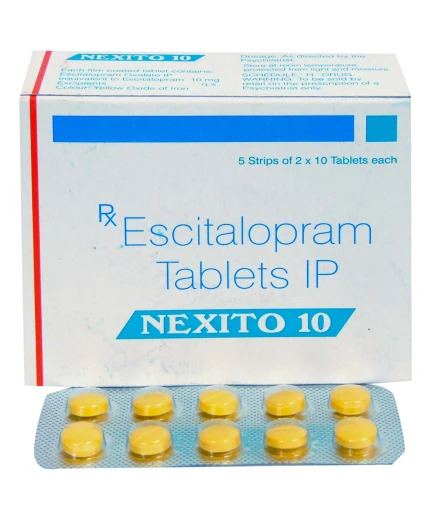Escitalopram 10 mg is commonly prescribed for treating anxiety and depression disorders. Here’s a brief overview of how it works for each condition:
How Escitalopram Works
Escitalopram is a selective serotonin reuptake inhibitor (SSRI). It works by increasing the levels of serotonin in the brain, which helps improve mood and reduce symptoms of anxiety and depression.
Treating Anxiety Disorders
- Generalized Anxiety Disorder (GAD): Escitalopram helps alleviate the excessive worry and tension that characterize GAD.
- Panic Disorder: It can reduce the frequency and severity of panic attacks and their related symptoms.
- Social Anxiety Disorder: Escitalopram helps with the overwhelming fear of social situations.
Treating Depression
- Major Depressive Disorder (MDD): Escitalopram can improve mood, energy levels, and overall well-being in individuals with MDD.
- Persistent Depressive Disorder (PDD): It helps manage chronic depressive symptoms.
Dosage and Administration
- Starting Dose: Typically, the starting dose is 10 mg once daily.
- Adjustments: Your doctor may adjust the dose based on your response and any side effects.
Side Effects
Common side effects may include nausea, insomnia, fatigue, dry mouth, and sexual dysfunction. Most side effects are mild and tend to improve with time.
Considerations
- Duration: It may take several weeks to notice improvements in symptoms.
- Discontinuation: Do not stop taking Escitalopram abruptly; consult your healthcare provider for a proper tapering plan.
Conclusion
Escitalopram 10 mg can be effective in treating anxiety and depression disorders, offering relief from symptoms and improving quality of life. Always follow your healthcare provider’s instructions and discuss any concerns or side effects with them.


